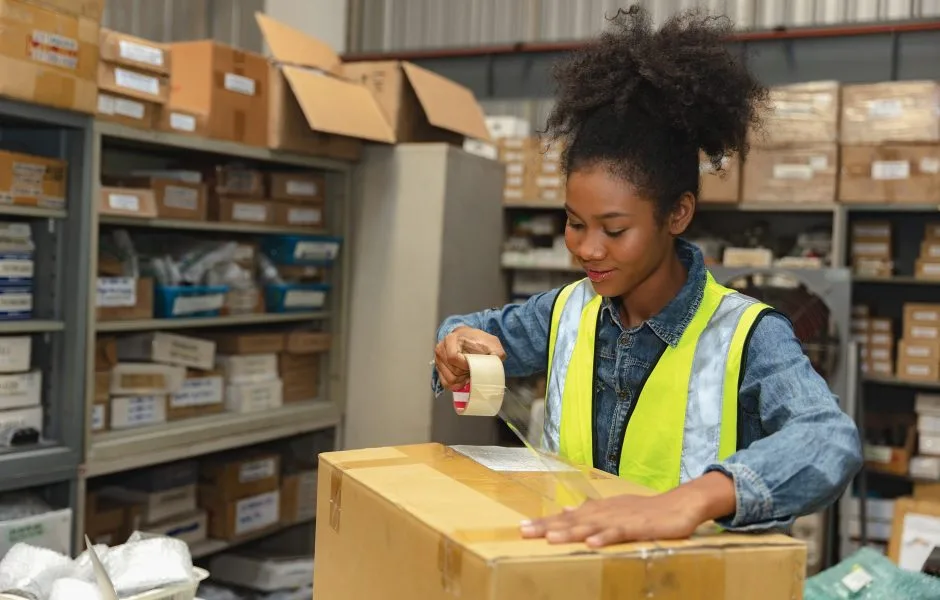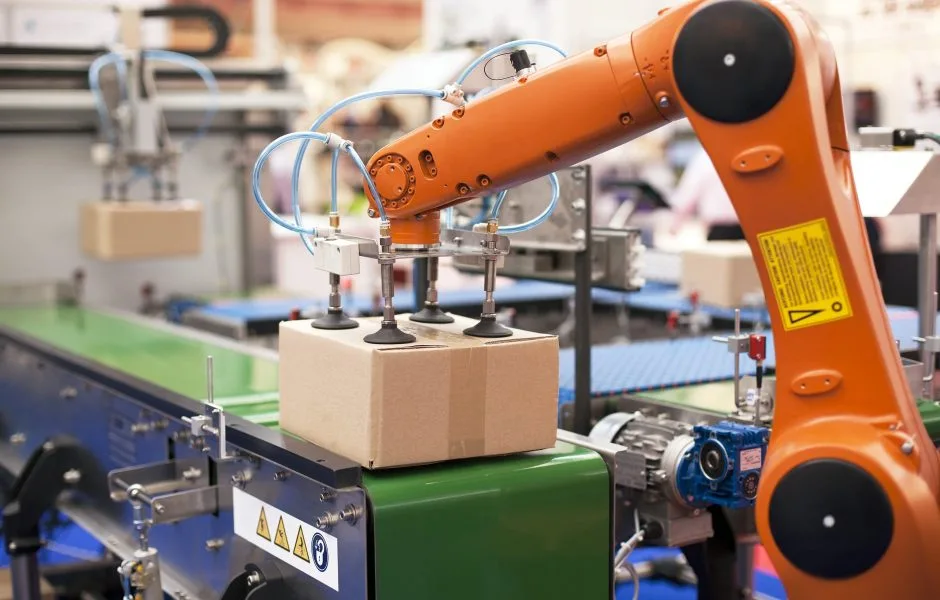A Comprehensive Guide to Kitting and Assembly in Modern Supply Chain Management

In the fast-paced world of supply chain management, businesses are increasingly turning to third-party logistics (3PL) providers to streamline their fulfillment processes. eCommerce fulfillment services play a pivotal role in handling the intricacies of the order fulfillment process. These services encompass a range of operations, from warehousing and labeling to the efficient kitting and assembly process. For businesses seeking cost-effective solutions, outsourcing fulfillment to a dedicated fulfillment center proves invaluable. Such centers specialize in optimizing the shipping costs associated with eCommerce, ensuring that every single unit is efficiently managed.
Understanding Kitting
Kitting in supply chain management is the strategic grouping and packaging of individual items to form a new, value-added product or kit. Benefits of kitting include:
- Streamlined operations
- Reduced picking errors
- Enhanced flexibility
- Optimized inventory levels
- Accelerated fulfillment times
- Cost savings
Custom kitting, tailored to the unique needs of each business, further enhances the production process. This approach not only minimizes the need for businesses to manage raw materials but also allows for single SKU (Stock Keeping Unit) management, simplifying inventory tracking. Strategically outsourcing eCommerce fulfillment services empowers businesses to focus on their core operations while a 3PL provider handles the complexities of order fulfillment.
Kitting and Assembly Technologies
The landscape of kitting and assembly is undergoing a transformative shift, propelled by cutting-edge technologies that redefine efficiency and precision. The synergy of automation, robotics, and sophisticated software solutions has become the linchpin in elevating the efficiency of kitting and assembly processes.
- Automation: Automated systems streamline repetitive tasks, reducing manual labor and enhancing accuracy. From conveyor systems to robotic arms, automation plays a pivotal role in expediting kitting and assembly operations.
- Robotics: Robotics introduces a new dimension of precision and speed. Robots can handle intricate tasks with dexterity, from pick and pack services to assembling complex products, thereby accelerating the entire process.
- Software Solutions: Advanced software solutions, including inventory management systems and Artificial Intelligence (AI) algorithms, optimize the planning and execution of kitting and assembly. These systems enhance real-time visibility, demand forecasting, and order processing.

Common Challenges in Kitting and Assembly
Kitting and assembly, while transformative, are not without their share of challenges.
- Complex Product Configurations: Assembling kits with intricate or highly customizable product configurations can pose challenges in maintaining accuracy and efficiency.
- Inventory Management: Balancing inventory levels of individual components, especially in dynamic environments, can become a logistical puzzle, leading to potential stockouts or overstock situations.
- Human Error: The involvement of manual labor in kitting and assembly processes introduces the risk of human error, impacting the precision and reliability of the final product.
- Scalability Issues: Rapid business growth may outpace the scalability of existing kitting and assembly processes, resulting in bottlenecks and reduced operational flexibility.
The challenges outlined have a cascading effect on both operational efficiency and customer satisfaction. Delayed fulfillment, increased costs, and decreased customer satisfaction are potential consequences.
Strategies for Overcoming Common Hurdles in Kitting and Assembly
Overcoming challenges in kitting and assembly requires a strategic and proactive approach:
- Implementing Automation: Integrate automation technologies to minimize the impact of human error and enhance the efficiency of kitting and assembly processes.
- Adopting Advanced Inventory Management Systems: Utilize sophisticated inventory management systems to optimize stock levels, prevent stockouts, and streamline the tracking of components.
- Investing in Scalable Solutions: Choose technologies and processes that can scale with the growth of the business, ensuring that kitting and assembly operations remain agile and adaptable.
Through a thoughtful examination of these challenges and the implementation of proactive strategies, businesses can fortify their kitting and assembly processes, ensuring operational resilience and the delivery of high-quality products that meet or exceed customer expectations.
Best Practices for Efficient Kitting and Assembly
Efficiency in kitting and assembly processes is critical for businesses to meet customer demands, reduce costs, and maintain a competitive edge. Implementing best practices ensures a streamlined and optimized operation. Here are key practices for achieving efficiency in kitting and assembly:
Strategic Planning and Design
Clearly outline the goals of kitting and assembly processes, whether it’s improving order fulfillment, accommodating product variations, or reducing lead times.
Design workspaces with efficiency in mind, considering factors such as workflow, accessibility, and ergonomic considerations to minimize unnecessary movements.
Automation Integration
Assess tasks suitable for automation, such as repetitive picking or packaging, and implement automated systems to enhance speed and accuracy.
Incorporate robotic systems for complex assembly tasks to increase precision, reduce manual labor, and improve overall efficiency.
Advanced Inventory Management
Utilize Radio-Frequency Identification (RFID) technology for real-time tracking of inventory, enabling accurate monitoring and reducing the likelihood of errors.
Implement robust demand forecasting practices to align kitting and assembly with actual market needs, preventing overstock or stockouts.
Quality Control Measures
Integrate quality control measures at various stages of kitting and assembly to identify and rectify defects early in the process.
Provide continuous training to staff on quality standards and procedures to ensure consistent output.
Flexible Workforce Management
Cross-train employees to handle multiple aspects of kitting and assembly, fostering flexibility and adaptability in response to changing demands.
Implement agile staffing strategies to manage peak periods or unexpected fluctuations in production requirements.
Lean Manufacturing Principles
Embrace a culture of continuous improvement, applying lean manufacturing principles to identify and eliminate waste, enhance efficiency, and optimize resources.
Conduct Kaizen events and involve employees in problem-solving and process improvement initiatives.
Technology Integration for Real-Time Monitoring
Utilize data analytics tools to analyze performance metrics, identify bottlenecks, and make data-driven decisions for continuous improvement.
Implement Internet of Things (IoT) sensors for real-time monitoring of equipment and processes, enabling proactive maintenance and reducing downtime.
Supplier Collaboration
Foster collaborative relationships with suppliers to ensure a steady and reliable flow of components, reducing the risk of disruptions in the kitting and assembly process.
Establish clear communication protocols with suppliers to promptly address any issues related to quality, quantity, or delivery timelines.

Future Trends in Kitting and Assembly
As technology continues to advance and industries evolve, the landscape of kitting and assembly is poised for transformative shifts. Anticipating and adapting to these future trends is crucial for businesses to stay competitive and embrace innovations.
- Internet of Things (IoT): The integration of IoT devices into kitting and assembly processes allows for real-time monitoring of equipment, inventory, and production lines, optimizing efficiency and enabling predictive maintenance.
- Augmented Reality (AR): AR applications are likely to revolutionize assembly processes by providing workers with real-time visual guidance, reducing errors, and enhancing training programs.
- Demand Forecasting: Advanced analytics and machine learning algorithms will play a pivotal role in predicting demand patterns, enabling businesses to proactively adjust kitting and assembly processes to meet changing market needs.
- Dynamic Process Optimization: Machine learning will be employed for dynamic optimization of assembly processes, continually learning and adapting based on real-time data.
- Green Assembly Practices: Future trends indicate a growing emphasis on environmentally friendly kitting and assembly processes, with businesses incorporating sustainable practices such as eco-friendly packaging materials and reduced waste.
- Circular Economy Integration: The adoption of circular economy principles, including product recycling and reusability, will influence kitting and assembly strategies to align with global sustainability goals.
- Human-Robot Collaboration: The integration of collaborative robots, or cobots, will become more prevalent, fostering seamless collaboration between human workers and robots in kitting and assembly tasks.
- Flexibility and Adaptability: Cobots are designed to be flexible and easily programmable, allowing businesses to adapt assembly lines swiftly to changing product requirements.
- Customization and Prototyping: 3D printing technologies will revolutionize kitting and assembly by enabling on-demand customization and rapid prototyping, reducing lead times and increasing flexibility.
- Localized Manufacturing: The adoption of 3D printing for components can lead to a shift toward localized manufacturing, minimizing the need for extensive supply chains.
- Enhanced Traceability: Blockchain technology will enhance traceability in kitting and assembly processes, providing an immutable ledger of every component’s journey from suppliers to the final product.
- Smart Contracts for Supply Chain: The use of smart contracts on blockchain can automate and streamline contractual agreements, improving transparency and efficiency in supplier relationships.
- Virtual Reality (VR) Training: Future trends suggest an increased use of virtual reality for workforce training in kitting and assembly, offering immersive and interactive training experiences for employees.
- Skill Enhancement Platforms: Online platforms incorporating augmented reality and gamification elements will become prevalent for upskilling workers in kitting and assembly processes.
Kitting Services Streamline Operations
Businesses must embrace and implement efficient kitting and assembly practices to stay competitive in a rapidly evolving landscape. Kitting and assembly processes serve as the linchpin for meeting customer expectations, reducing costs, and navigating the complexities of modern commerce.
As businesses strive for operational excellence, Radial stands as a trusted ally in this journey. With its state-of-the-art solutions, Radial empowers businesses to not only meet but exceed the challenges of kitting and assembly. By integrating Radial’s innovative technologies and expertise, businesses can elevate their operations to new heights, ensuring they are well-positioned for success in the ever-evolving supply chain management landscape. Embracing efficient kitting and assembly practices is essential for businesses to stay competitive in a rapidly evolving landscape, and Radial is at the forefront of providing solutions tailored to these evolving needs.
Radial can help with kitting and assembly.
